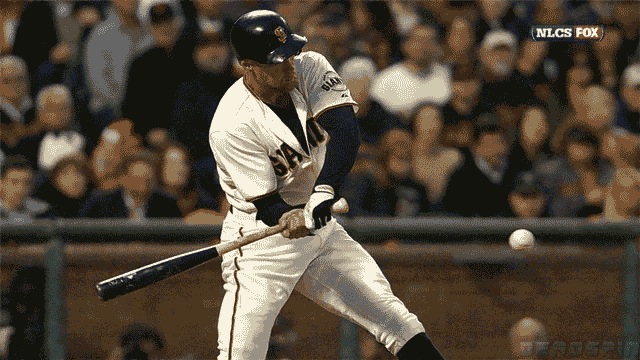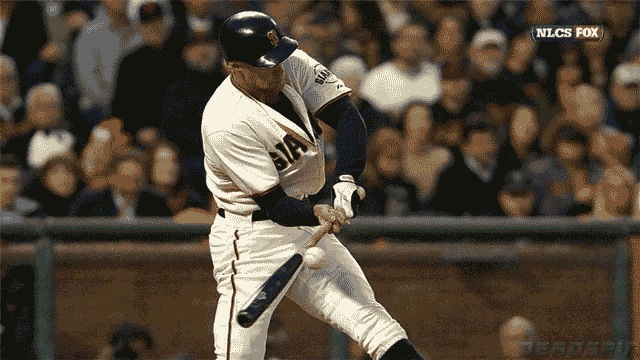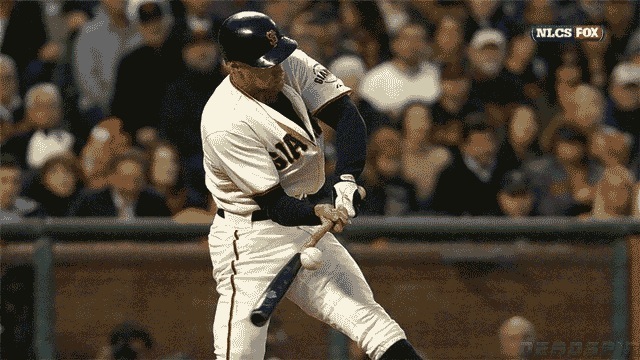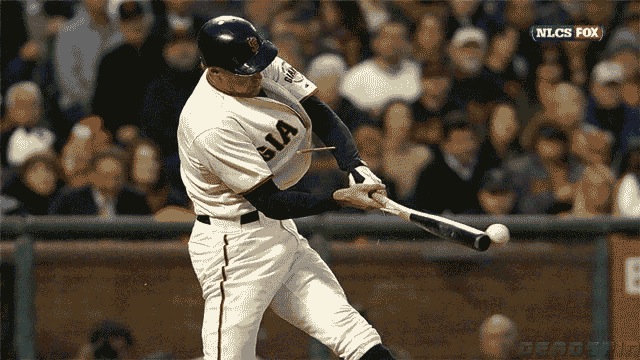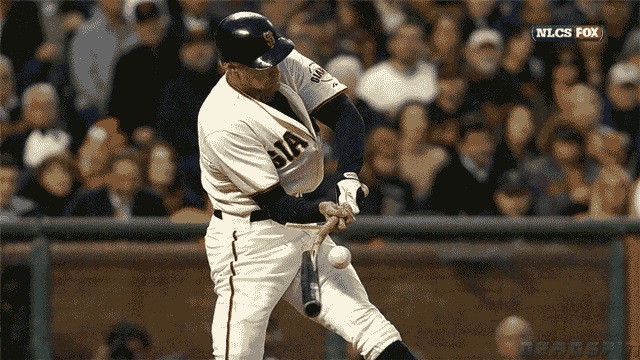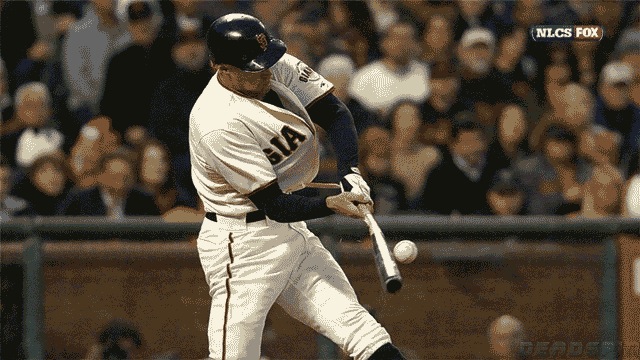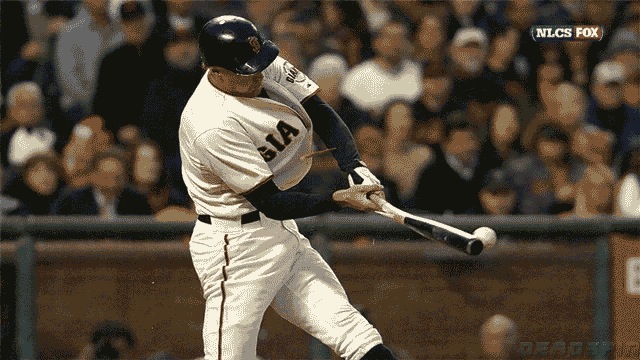Dynamics and fracture of Hunter Pence's bat
October 24, 2012 at 10:41 PM by Dr. Drang
If you didn’t see this Monday night, you probably saw a link to it later. It was the bottom of the third with the bases loaded for the Giants. Hunter Pence hit a broken-bat single through the infield that scored two earned runs and one unearned run on a misplay in the outfield. Giants went on to score two more runs in the inning and pretty much buried the Cardinals in the final game of their series.
What was remarkable about the hit was how Pence’s bat behaved. Fox played the super slow-motion over and over, as have several web sites.
I took the above from an animated GIF at Deadspin and converted it to H.264; the screenshots below are from the same source. Deadspin got its GIF from SB Nation, which, of course, grabbed it from Fox. I hope I’ve covered all my attribution bases.
What everyone thinks is amazing is how Pence’s bat hit the ball three times during the swing: once when the bat cracked and then twice more as Pence followed through and the bat vibrated. Given baseball’s long history, I’m sure this has happened before, but I have to believe it’s the first time it’s ever been captured so well on video.
Pence was able to hit the ball three times because
- He hit it squarely and the ball’s rebound stayed in the path of his swing.
- The fracture didn’t go all the way through the bat, so the barrel kept moving with the swing.
- The ball came off the bat so slowly that the barrel was able to catch up with it as it flexed back from the vee shape it took right after impact.
The ball came off the bat with about half the speed it had during the approach, which we can determine by counting frames of the video. Here’s Frame 3 of the GIF:
We’ll use the fan in the black hat in the first row as our gauge. In this frame, the ball is under his chin. Frame 20 is just before impact
and Frame 21 is just after impact.
You can see that the bat has already cracked in this frame. So that’s roughly 17 frames between our fan gauge and impact. Now we look for the frame where the ball has gotten back to the fan’s chin. It’s Frame 53,
which is 32-33 frames after impact. Twice as many frames to go the same distance means half the speed. Actually, the ball’s initial speed after the first impact was a bit slower; by Frame 53 it’s already been hit a second time in Frame 37 or 38 and a third time in Frame 51 or 52.
After the initial impact, the bat took on a vee shape as the back of the bat splintered and it bent in the cracked zone. Here it is more or less at maximum bend in Frame 27.
You can see a little chunk of wood along the bottom edge of Pence’s right sleeve. That broke off very early and flew up into his jersey. By Frame 41, just after the second impact with the ball, the bat had straightened out and flexed a bit in the opposite direction.
It then flexed back toward its original vee shape, which allowed the barrel to catch up with the ball and hit it a third time by Frame 52.
This flexing is superimposed on the rigid body motion of Pence’s normal swing.
The bat was able to bend so much because of the cracking near the boundary between its painted and unpainted portions. We’ve already seen the little piece that came flying off the back side of the bat. You can also see in Frame 52, and in the video itself, a similar-sized splinter that broke near Pence’s hands but stayed attached to the barrel at its other end. I would guess that less than half the thickness of the bat is still intact, competent wood at this point.
The splintering of wood as it breaks is one of its great features as a structural material. A wooden beam in bending—which is what the bat is—doesn’t crack straight across the beam; the grain of the wood forces the crack to travel up and down the length of the beam as well. This tortuous cracking path—the splintering—absorbs a great deal of energy and can arrest the crack before it travels through the thickness of the beam. That’s what happened to Pence’s bat and was part of the reason it managed to hit the ball three times.
That little piece that flew off into Pence’s jersey, though, is an anomaly. Notice how its two short ends are pretty straight? The crack ran straight across the grain in those areas, a sign of poor energy absorption and, perhaps, a small zone of poor quality wood that happened to be at the wrong place at the wrong time.
Or maybe it was at the right place at the right time. If the bat hadn’t broken, Pence might have grounded into a double play and kept the inning from getting out of hand.

